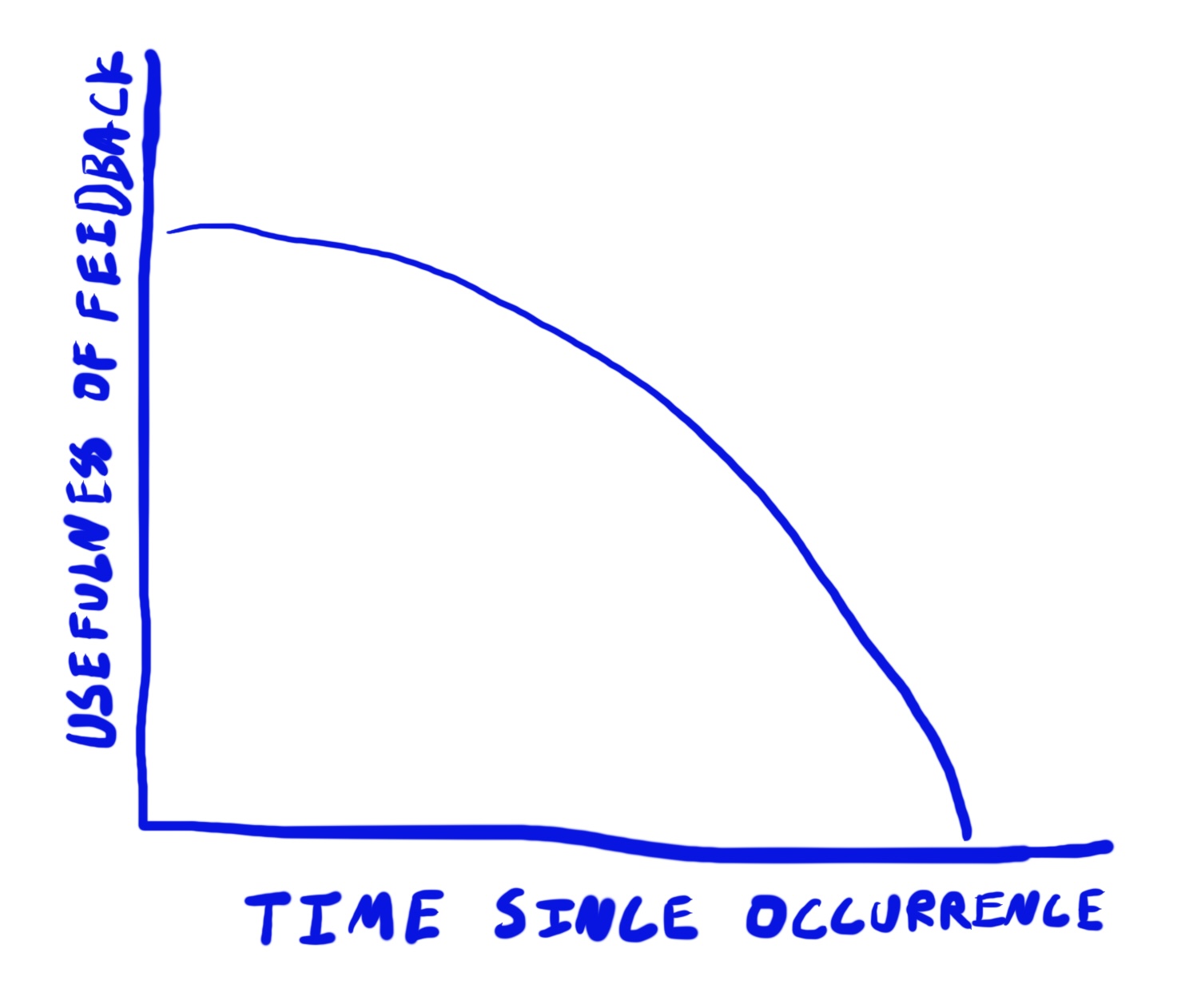Are these two responses all too familiar to you when something goes wrong?
- Management finds someone to blame instead of taking responsibility for allowing a system that allows the thing to go wrong
- They then promise to have more thorough review going forward so that the problem won’t happen again, adding onerous process to an already overburdened system
I don’t know what the optimal number of reviews is, but after a crisis, it seems like it’s always n+1.
This usually doesn’t work out. Reviews happen after-the-fact. As Deming said:
Inspection does not improve the quality, nor guarantee quality. Inspection is too late. The quality, good or bad, is already in the product. As Harold F. Dodge said, “You can not inspect quality into a product.” (Out of the Crises, p29)
The more distance in space or time between the doing of work and feedback on the work, the less useful that feedback. I captured this idea in a beautiful, original graph because charts make things more credible:

It ends up looking a lot like medical billing. You have some procedure done in a hospital, and then 6 months later you get randomized bills from the hospital, the doctor, and that guy who happened to be walking by the hospital that day.
Instead of this fool’s errand, build a culture where “everyone in our value stream find[s] and fix[es] problems in their area of control as part of their daily work.” (The DevOps Handbook, p42).
Said another way, improving the daily work is the daily work.
